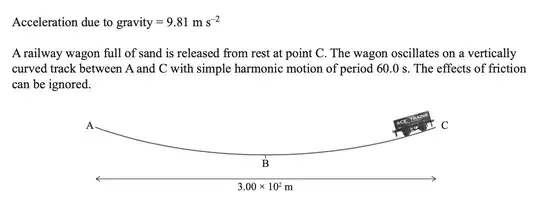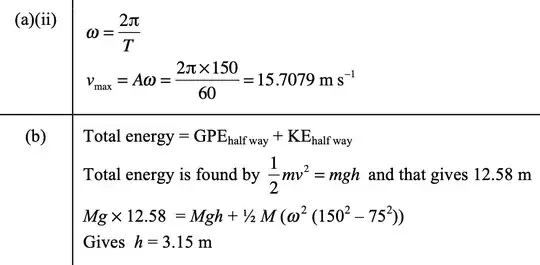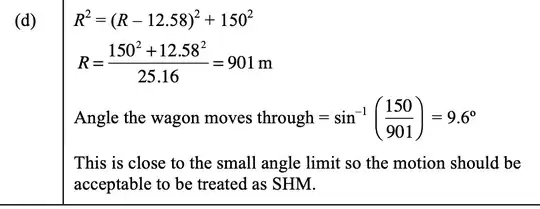This scenario is taken from the 2018 NZ Scholarship physics exam:
(Just in case the image doesn't load, it involves a wagon on a curved track (concave up). The wagon moves down from one side, to the other, then back again (with simple harmonic motion of period 60s). The question later goes onto say that the track is the arc of a circle.
The answers do not take this method, but I am wondering if it is possible to equate the motion of this wagon on this track, to the motion of some mass attached to a pendulum - that gives a SHM period of 60s, where the length of the pendulum is the radius of the circle this arc track is from. Is it possible to do so and why/why not?
The paper goes onto ask these 3 questions:
Solutions (without assuming this can be modelled with pendulum):
We see the circle has a radius of 901m. However, if we assume it can be modelled by a pendulum, the radius / length of pendulum, will be 849m (found with $T = 2pi*sqrt(l/g)$. This suggests we cannot model this as a pendulum, why is this?





